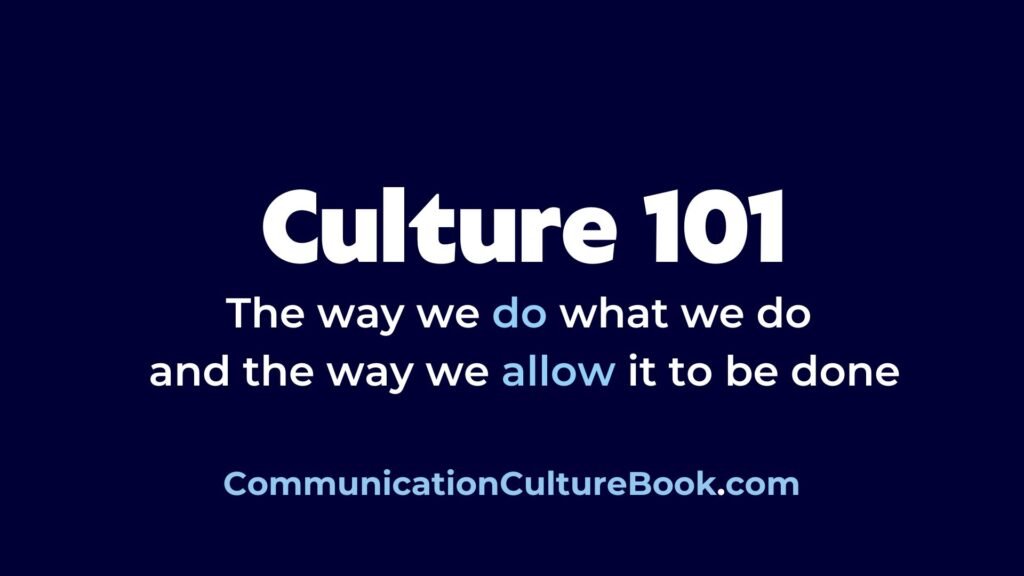Why Leaders Must Shift from Strategy to Cultivation

Peter Drucker famously said, “Culture eats strategy for breakfast.” But in reality, culture isn’t just about what we intend to do—it’s about what we actually do and, just as importantly, what we allow to be done.
If you’re leading a team, managing a department, or striving to improve workplace dynamics, your culture is either your greatest asset or your biggest liability. It influences retention, performance, and engagement—whether you measure it or not.
The good news? You have more control over it than you think.
With the right approach, you can cultivate a culture where people thrive, collaboration is second nature, and results take care of themselves.
This article is your playbook for shaping a culture that works for you, not against you—based on insights from Communication Culture Vol. 1 and strategic conversation techniques from Exactly What to Say (EWTS).
Culture is Cultivated, Not Created
A thriving culture isn’t built once—it’s maintained daily. Think of it like farming: you control what you can control, but growth is a continuous process.
Many leaders fall into the “set it and forget it” trap, assuming that once a mission statement is written or a training session is completed, culture takes care of itself. But culture requires intentional cultivation.
And when it’s cultivated correctly, it reaps:
- Increased trust - because clarity replaces confusion.
- Higher engagement - because people feel valued and invested.
- Stronger performance - because alignment leads to momentum.
- Better retention - because people stay where they’re seen, heard, and challenged.
But if you don’t actively cultivate it, dysfunction will take root. And dysfunction doesn’t announce itself with flashing warning lights—it starts in the locker room with small, seemingly harmless cracks:
- A single toxic teammate turns the breakroom into a breeding ground for complaints and gossip.
- A disengaged employee infects the energy of those around them, pulling top performers down.
- A leader’s blind spot whether in communication, expectations, or accountability—creates gaps that division will eagerly fill.
At first, these issues seem small. But division and disunity are never neutral—they spread and spread quickly.
This is where organizations get blindsided. By the time leadership realizes there’s a problem, the damage is already being done in lost productivity, fractured teams, and high turnover.
That’s why organizations hire me to do two things:
1️⃣ Keep the locker room from becoming toxic.
2️⃣ Remove the blind spots from leadership before they cost the organization its best people and best opportunities.
👉 Ask Yourself: What are you currently tolerating in your workplace that’s working against your ideal culture?
The Million-Dollar Question: What’s Your Culture Costing You?
Many organizations avoid asking tough culture questions because they fear the answers. But ignoring them doesn’t eliminate the cost—it only delays the inevitable.
Culture has a price tag in three major areas:
People
High turnover, disengagement, internal conflicts.
Processes
Inefficient systems, breakdowns in collaboration.
Productivity
Missed deadlines, low morale, inconsistent performance.
But the flip side? Culture also pays dividends.
When leaders cultivate a strong, aligned culture, they gain:
🌟 More buy-in—because people aren’t just working for the company, they feel part of it.
🌟 More innovation—because great ideas surface in environments where people feel safe to share them.
🌟 More energy—because people move faster and further when they trust the team they’re running with.
A strong culture cultivates recognition and trust. Studies in people operations show:
- 72% of employees say recognition is the #1 factor in engagement.
- 60% feel they aren’t recognized enough.
- 53% say their work has never been acknowledged by their manager.
👉 Reflection Exercise: Rate the communication culture in your organization from 1-10 (1 being awful and 10 being awesome). Now ask: What is this culture costing us in productivity, collaboration, and retention?
3 Shifts to Cultivate a Stronger Culture Today
1. Measure What Matters
The key to culture improvement is awareness. Start tracking how communication, recognition, and engagement impact performance. If it’s not measured, it’s not managed.
👉 “I’m not sure if this is for you, but would you be open to tracking our team’s engagement for the next 30 days?” (This soft approach lowers resistance and invites participation.)
2. Recognize the Right Behaviors
What gets rewarded gets repeated. If you want a culture of collaboration, innovation, or accountability, you must intentionally recognize those behaviors.
👉 “Most people in your position struggle with [X], but I’ve noticed you handle it differently. What’s your approach?” (This affirms positive behavior while prompting deeper engagement.)
3. Reframe Communication as a Leadership Tool
Every leader needs to ask: Am I just managing tasks, or am I shaping culture with my words?
Poor communication creates gaps, and where there’s a gap, negativity fills it. By using the right language, leaders can shift mindsets and behaviors.
👉 “Just imagine what would happen if we all committed to one culture improvement this week. What would you suggest?” (This engages the team in culture ownership rather than top-down mandates.)
Final Thought: Culture is a Daily Decision
Every meeting, every email, every interaction is a chance to either cultivate or weaken workplace culture. Leaders who prioritize visibility, credibility, authenticity, and availability through communication will create environments where team members don’t just work together—they thrive together.
Culture isn’t about what you say.
Culture is the way you do what you do, and the way you allow it to be done.











